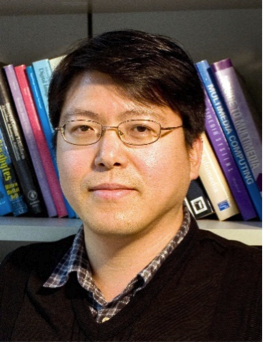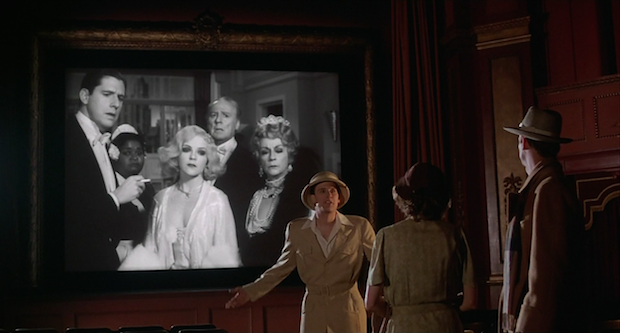
Will Augmented Reality (AR) allow us to access digital information, experience others' stories, and thus explore alternate realities? AR has recently attracted attention again due to the rapid advances in related multimedia technologies as well as various glass-type AR display devices. However, in order to widely adopt AR in alternate realities, it is necessary to improve various core technologies and integrate them into the AR platform. Especially, there are several remaining technical challenges such as: 1) real-time recognition and tracking of multiple objects while generating an environment map; 2) organic user interfaces with awareness of user's implicit needs, intentions or emotion as well as explicit requests; 3) immersive multimodal content augmentation and just-in-time information visualization; 4) multimodal interaction and collaboration during augmented teleportation, etc. In addition, in order to encourage user engagement and enable the creation of an AR ecosystem, AR standards should be established that support creating AR content, capturing user experiences, and sharing the captured experiences.
But what about humans in that regard? Are humans ready to live happily in the age of alternate realities? Even if humans actively use AR in their daily lives to explore alternate realities, overuse can lead to passive lives like avatars, rather than improving efficiency or expanding their abilities. In other words, such a high dependence on the AR can contribute towards degrading or even losing human abilities and ultimately lower the quality of life (QoL). Though technology has been developed as a tool to expand humans' abilities and improve QoL, sometimes technology is seen as a threat to overwhelm or replace humans. In addition, sometimes technology addiction causes humans to be isolated or alienated from society. If so, what do humans gain and lose, if they actively use AR as a tool to access, manipulate, and maintain a variety of information through place or objects of interest (PoI or OoI) in alternate realities? Will future humans rather be a Homo Deus or idiots?
How should we prepare for the future where human, reality and alternate realities co-exist? An Augmented Human (AH) is a person who is able to use AR effectively to expand the physical, intellectual and social abilities of the user. How then can a human become an AH? First, the AH platform, the bridge between human and AH, needs a personalized agent that understands and represents the human. The agent monitors the human's actions and reactions, negotiate with other agents on behalf of the human, and provide appropriate alternatives to make appropriate choices or decisions. The agent constantly collects and analyzes the signals of various sensors over a long period of time to construct a digital twin with a Holistic Quantified Self (HQS) that consists of: 1) a physical condition; 2) an emotional state; 3) a social relationship state; and 4) a digital consumption state. Consequently, the agent is ready to act as a personalized companion by monitoring the individual's digital personality by observing HQS patterns and changes over time.
In this keynote I introduce the current state of AR and also VR and explain the implications of AR/VR as a new medium or platform that extends human abilities beyond time and space. In particular, I explain the potential of VR/AR combined with Internet of Things (IoT), Big Data, Artificial Intelligence (AI) and 3D digital maps, and discuss various possible applications in everyday life where 'reality and alternate realities' coexist. Finally, I will look at the future of humans in the alternate realities era and share my view on possible AH technology capable of broadening humans' physical, intellectual and social abilities.
Short bio
Woontack Woo is a professor in Graduate School of Cultural Technology (GSCT) at Korea Advanced Institute of Science and Technology (KAIST), Korea. Before joining KAIST in 2012, he was a professor at Gwangju Institute of Science and Technology (GIST) since 2001. He had served as the president of HCI Kore (2014-15) and currently serves as vice presidents of several related academic societies such as SigCG&I (2010-) in the Korean Institute of Information Scientists and Engineers (KIISE), the Korea Institute of Next Generation Computing (2011-), and the Korea Computer Graphics Society (2008-). He earned his bachelor's degree in electronic engineering from Kyungpook National University in 1989 and his master's degree in electronic and electrical engineering from Pohang University of Science and Technology (POSTECH) in 1991. In 1998, he received his Ph.D. in electrical engineering from the University of Southern California (USC) in Los Angeles, California, USA. He, as an invited researcher, joined Advanced Telecommunica-tions Research (ATR) in Kyoto in 1999.
The main research theme is to improve the quality of life through the augmented human technology that helps humans to live as smart citizens in Smart City. He coined the terminology "ubiquitous virtual reality (UVR) meaning VR in ubiquitous computing era" when he founded UVR Lab at GIST. Since then, he has developed a variety of AR applications such as DigiLog Books, DigiLog Miniature, and DogiLog Spaces. He now is leading a new research direction in the field of 'augmented humans' by integrating 3D Vision, 3D CG, HCI, and AI into the framework of context-aware VR/AR. He has submitted more than 150 patents and has published over 400 papers in major journals and conferences.
More information: @linkedin | @kaist
